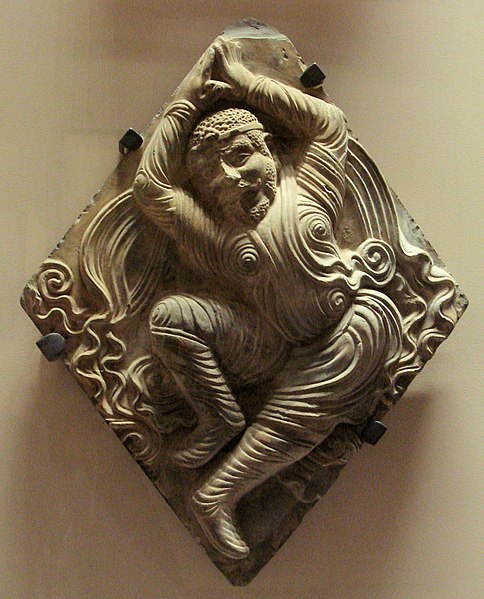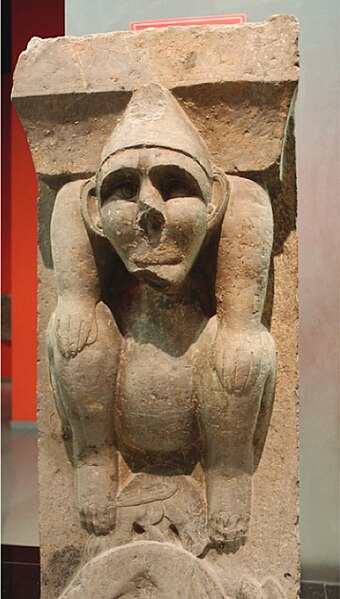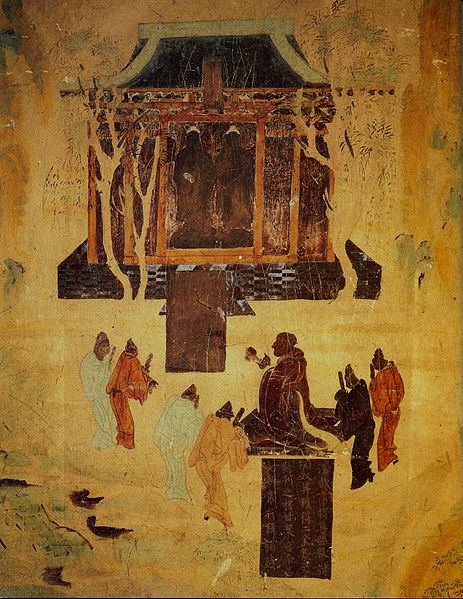Hu also Huren or Huzu, was a rather vague term to designate ancient barbarians, namely populations beyond the Central Plains, generally to the north and west of China. The Hu are usually horse or mounted nomads.
Sogdian Huteng dancer, Xiuding temple pagoda, Anyang, Henan, China, Tang dynasty, 7th century.
Image: Hu statue columns from Wu Baizhuang 吳白莊 Han period tomb in Linyi, Shandong
Image: Hu statue with lion column from Wu Baizhuang 吳白莊 Han period tomb in Linyi, Shandong
Jin Midi (Chinese: 金日磾; pinyin: Jīn Mìdī, courtesy name Wengshu, formally Marquess Jing of Du, was a Xiongnu Xiutu prince and a general of the Western Han dynasty. He was referred to as a non-Han "barbarian", either with the term Hu or Yidi. He was originally from the Xiutu Kingdom in central Gansu and served as co-regent early in the reign of the Emperor Zhao of Han. He was given the family name "Jin" by Emperor Wu of Han because he worshipped the golden statue of the Xiongnu which Huo Qubing has captured in his military campaigns.
Jin Midi (kneeling) with his mother (seated). Wu Liang shrine, Jiaxiang, Shandong province, China. 2nd century AD. Ink rubbings of stone-carved reliefs as represented in Feng Yunpeng and Feng Yunyuan, Jinshi suo (金石索, 1821 edition).
8th century fresco at Mogao Caves depicting the Han Emperor Wu worshiping statues of the Buddha.
Tomb of Jin Midi, viewed from the top of the Tomb of Han General Huo Qubing, near Maoling






